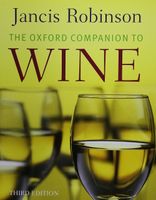Bottle colour
Published 2006
Wine keeps best in dark glass—as the Champenois, the most energetic researchers into the effects of bottle choice on wine, have found. roederer Cristal, which has traditionally been sold in clear glass, is always swathed in an orange wrap designed to filter out ultraviolet light (see lightstrike for more on this phenomenon). On the other hand, dark glass prevents the consumer from being impressed by the colour of a wine. For this reason, most rosés, not designed for bottle ageing in any case, are sold in clear glass. It is less clear why sauternes and other sweet white bordeaux is sold in clear glass; tradition is presumably the explanation. Most wine bottles are, for reasons of both tradition and the orientation of glass furnaces, some shade of green, from pale blueish green to a colour that to all intents and purposes is black. For traditional reasons again, brown glass is used for some Italian wines, for many fortified wines, and was the traditional way of telling a hock or Rhine wine from a mosel in green glass. Some German producers use blue-green glass, however, a nod to Victorian times when blue glass was often used. One of the most distinctive glass colours for wine bottles is the yellow-green used for white burgundy, called feuille morte in France and therefore ‘dead leaf’ in much of the New World. Wines are occasionally marketed in bright blue and bright red bottles.
Become a Premium Member to access this page
Unlimited, ad-free access to hundreds of the world’s best cookbooks
Over 160,000 recipes with thousands more added every month
Recommended by leading chefs and food writers
Powerful search filters to match your tastes
Create collections and add reviews or private notes to any recipe
Swipe to browse each cookbook from cover-to-cover
Manage your subscription via the My Membership page
Part of
Advertisement
Related Recipes
-
-
-
-
Related Reference
-
-
-
-
Advertisement



